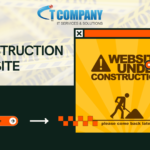So you have hacked website? Is it allowing hackers to distribute malware and plan data breaches/cyber-attacks? According to data, 30,000 websites are delivering malware daily. Mostly hacked website is subsequently exploited to disseminate malware to other systems.
To avoid being a part of the virus dissemination chain, each business owner should use a controlled, intelligent, and complete web application security solution. However, knowing what to do if you have a hacked website is as crucial.
Signs You Have a Hacked Website
The homepage/content seems altered or vandalised.
Web traffic is routed to a dubious pharmaceutical/banned/illegal/adult website.
You are unable to access your website/your login credentials are invalid/your account does not exist.
The website is providing advertisements for counterfeit/illegal items. This may infect the computers of your site’s visitors.
A hack might cause a sudden decline in speed and performance for no apparent reason.
Your website has been detected or banned by Google, Norton, or any other Web site reputation engine.
Google Analytics is displaying your rating for irrelevant keywords.
Your website is hacked, here are the steps to repairing and securing it.
Recognising the Attack and Determining the Causes
A Comprehensive Website Security Check
Use an intelligent, remote scanning tool to uncover warning messages, malicious payload, and malware location. Moreover, blacklist warnings, and other security concerns on your website. All databases, third-party components, website files and directories, software, plugins, legacy elements, server configurations, access control, CMS, and so on must be scanned. Furthermore, if the scanning program does not detect any malware, perform manual checks for unusual behaviour in Scripts and links. Also, check for cross-site contamination as well if your website is housed on the same server as others.
Examine files for recent changes
Examine your files, particularly core files, for suspicious or unexpected recent updates ranging from 7-30 days.
Use diagnostic tools to assess the security status
If Google, other web browsers, or web application security authorities quarantined/flagged/blacklisted your website, you must analyse your security status.
Restore the Hacked Website
After determining the location of malware on your compromised website, you must clean up, remove malware, and restore normal functioning.
Remember! Cleaning a hacked website entails several difficult and technical tasks. If you are hesitant, it is preferable to hire an expert for hacked website repair services.
Stopping malicious operations
If malicious operations are active, the clean-up will be ineffective, and the malware will wreak havoc on your website again.
Remove compromised website files
You should replace changed and suspicious files, harmful payloads, and so on with new or backed-up versions. Moreover, manually go through all the files on your website and eliminate any that you did not add or that appear suspicious. Manual cleaning should be done with utmost caution since it might further deteriorate the health of your website.
Remove any hidden backdoors
Hackers always make sure they have a route back into your website and will install many backdoors. Furthermore, encoding is used to guarantee that these backdoors are not identified. To avoid reinfection of your website, you must shut all backdoors.
Protect user accounts
Remove any user accounts that appear suspicious or strange.
Remove the malware notice
Request your hosting company/Google/web security authorities that blocked/flagged your website to evaluate it. Moreover, this ensures that your security concerns have been resolved.
Defending the Website Against Hackers
Cleaning a hacked website and restoring files/databases from backup are only the first two steps. The most important third step is to guarantee that your website is not hacked in the future.
Configuration settings and permissions should be updated and reset
To guarantee that no crucial security updates are missing, update all software, CMS, themes, plugins, and so forth.
Make sure there is just one admin account. Assign the least amount of power to other user roles.
Change the passwords for all access points.
Reinstall all plugins and extensions to ensure that there is no leftover infection.
Delete Deactivated plugins from your server.
Create a solid backup plan and backups.
A good backup strategy equals a strong security posture. Also, it is vital to create frequent and secure backups to recover quickly and securely from a hacking attack.
Malware scans all systems.
Any virus that remains on your computers/systems might simply reinfect your website. So, thoroughly scan your machines for malware.
Improve Web Application Security Measures
If you do not already have a comprehensive, managed security solution in place be sure to implement one to strengthen web application security. The solution must incorporate:
A sophisticated, automated scanner for regular and on-demand scanning.
A complete, flexible, and user-friendly Web Application Firewall that protects your website from unwanted attackers.
The knowledge of experienced security specialists.
Conclusion
If search engines such as Google tagged your website as “malicious” it can be disastrous for your business. Additionally, the process of recovering from a cyberattack is time-consuming and expensive. you must be vigilant about web security. Try to be vigilant about web security to avoid hackings.
Are you looking for website repair services? Visit now!








